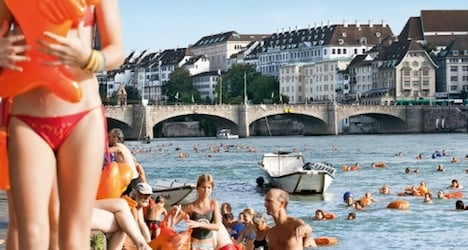The torrid conditions across the country are expected to be the warmest since 2003 when thousands of people — mostly elderly — succumbed to the heat across Europe, weather specialist meteonews said on its website on Monday.
From August 3rd to 13th in 2003 maximum temperatures exceeded 35C for 11 days, the website noted.
Forecasts are calling for the same kind of heat starting on Wednesday and continuing until at least July 8th as a stable high pressure system extends from the Atlantic Ocean to Central Europe.
The mercury will start nudging 30C or more on Tuesday in Geneva, Sion (canton of Valais), Bern, Basel and Lugano in the canton of Ticino.
The following day, anticipated highs will reach 35C in Sion and Basel, where the maximum is set to reach 37 degrees on Thursday and 38C on Friday.
HEATWAVE ALERT IN FRANCE
RECORD HEAT FOR JULY SEEN IN ITALY
While thunderstorms may bring brief respite in mountain areas, low temperatures at night are forecast to remain above 20C in many parts of the country.
Such extended periods of hot weather are relatively rare in Switzerland with the most recent example being a week in July 2006, when high readings above 30C were recorded every day.
Medical experts from various cantons are counselling elderly people and young children to stay indoors.
The canton of Vaud’s medical doctor warned that the general population should avoid physical activities from 11am to 3pm during the heatwave period.
In cases of heat stroke — with symptoms such as general weaknesses, dry mouth, confusion, vertigo, disorientation, nausea and cramps — people are advised to call a doctor without delay.
Meteonews says other advice for dealing with the above-average temperatures includes:
— drink at least two litres of water per day, while avoiding alcohol, fats and sugars
— wear light-coloured clothing and if you are going outside wear a cap or other hat
— freshen up by having at least one shower a day
— seek out cool, shaded areas
— if you have air conditioning, avoid setting the temperature below 21C — great differences between the heat indoors and outdoors can lead to sore throats and cases of angina
— ensure that elderly people — many of whom lose their sense of thirst — have enough to drink
— keep infants away from confined spaces and ensure they in a place with adequate air flow




 Please whitelist us to continue reading.
Please whitelist us to continue reading.
Member comments